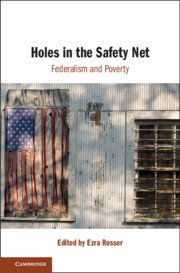New Report: Laura Wheaton, Ilham Dehry, Linda Giannarelli & Sarah Knowles, How Much Could Full Funding and Use of Housing Choice Vouchers Reduce Poverty? (Aug. 2023).
Housing assistance programs funded through the US Department of Housing and Urban Development (HUD) are a key component of the US social safety net. However, these programs are not funded at levels that would serve all eligible households, and only one-quarter of eligible households receive assistance. Housing choice vouchers are the most common type of assistance provided by HUD and account for about half of the households served. Vouchers subsidize the rent of units obtained through the private market. In this paper, we use the Analysis of Transfers, Taxes, and Income Security (ATTIS) microsimulation model to hypothetically create a situation in which every eligible household receives a housing choice voucher and finds a rental unit that will accept it. We examine the results in terms of aggregate benefit dollars and reductions in poverty as measured by the Supplemental Poverty Measure (SPM), both nationally and at the state level. We also look at the results by age group and by race and ethnicity.
We estimate that under the hypothetical scenario of full funding and full use of housing vouchers, aggregate annual housing subsidies would increase by $118 billion. Because of the increased benefits, the SPM poverty rate would decline by 13 percent overall and by 23 percent for children. An estimated 6.4 million people—including 2.5 million children—would receive enough additional support to have their families’ resources rise above the SPM poverty level. The extent of the change would vary, but across all states there would be substantial increases in benefits and reductions in poverty. Poverty would also decline for all racial and ethnic groups, with the biggest relative decline for Hispanic people.





